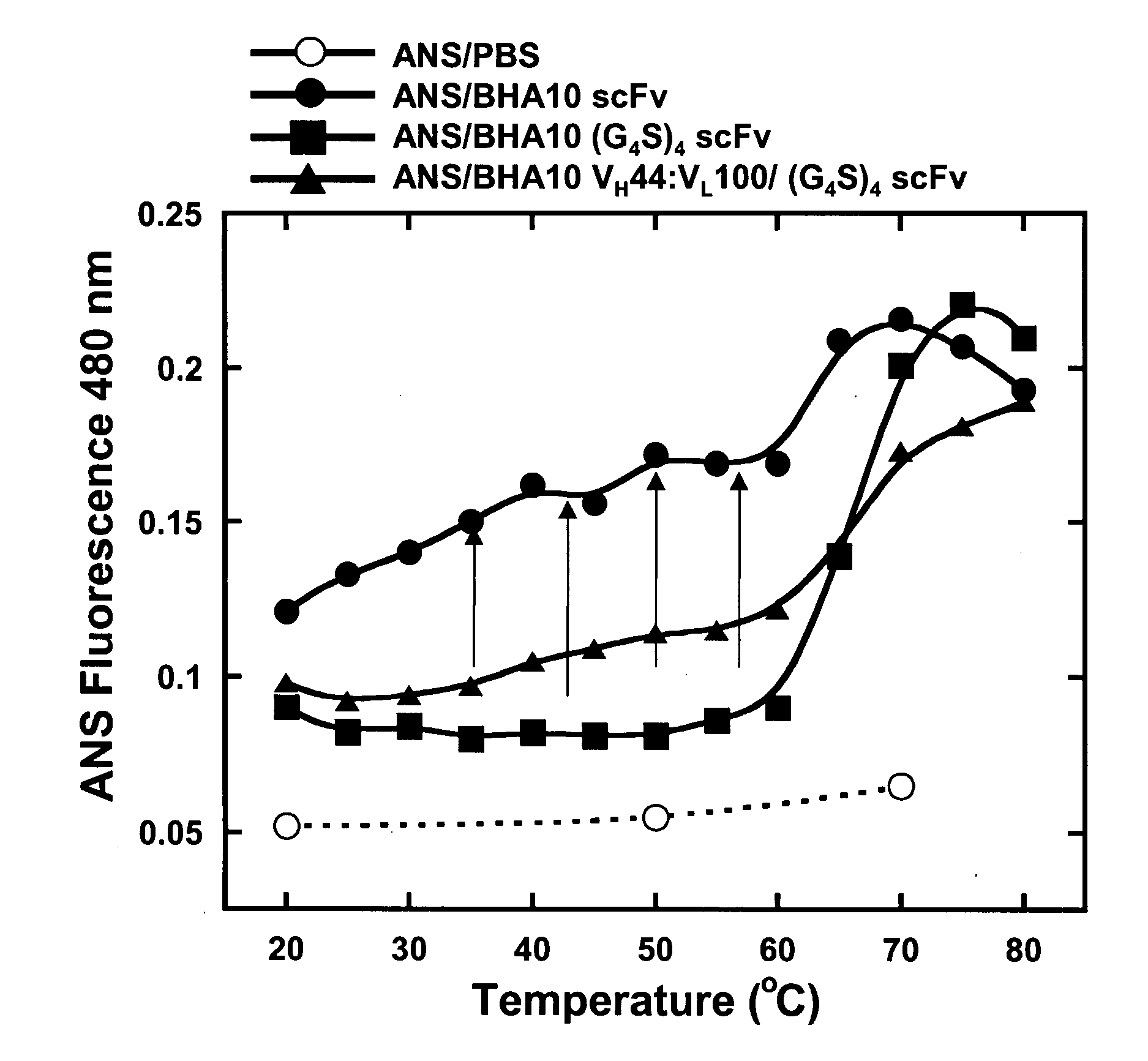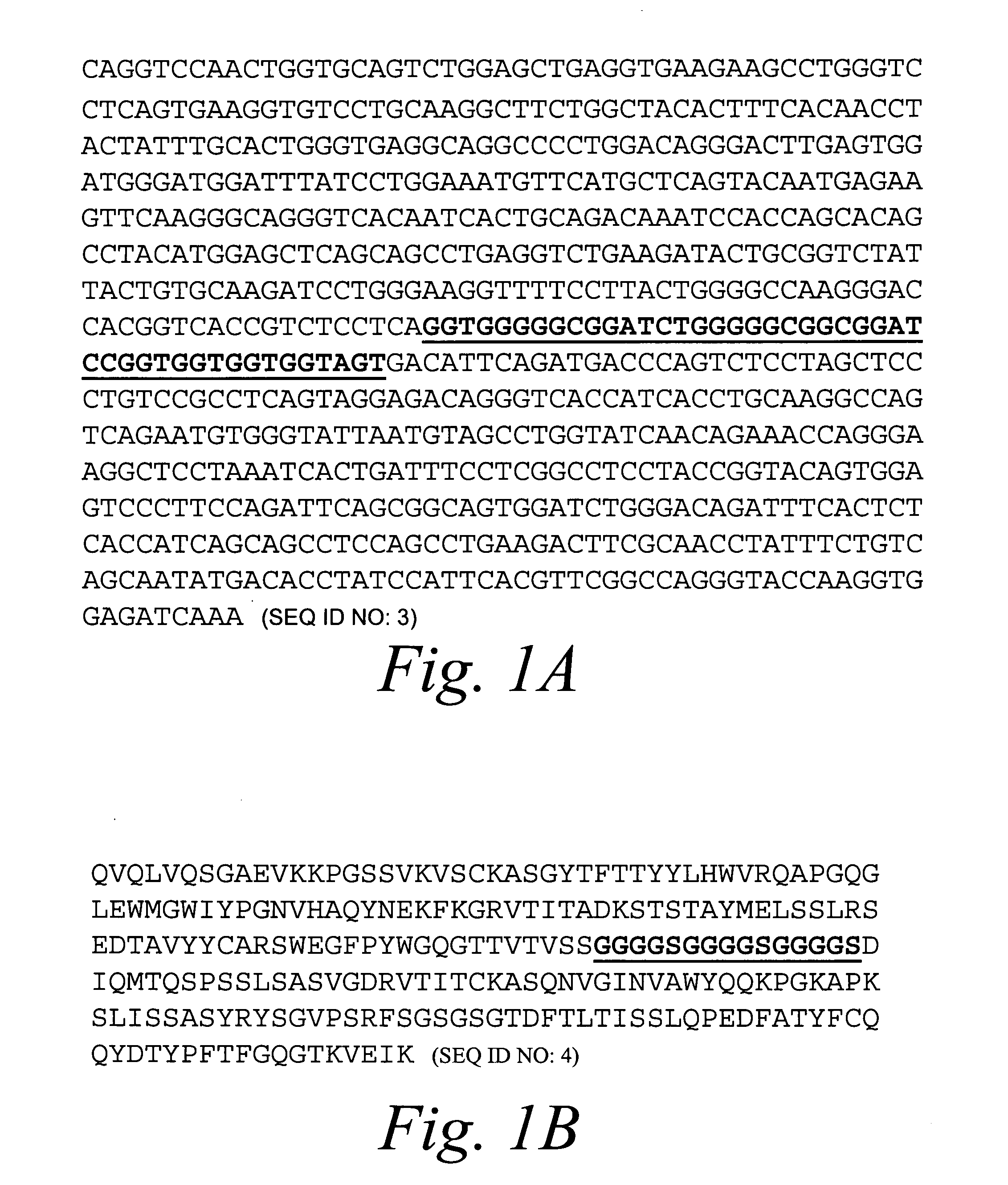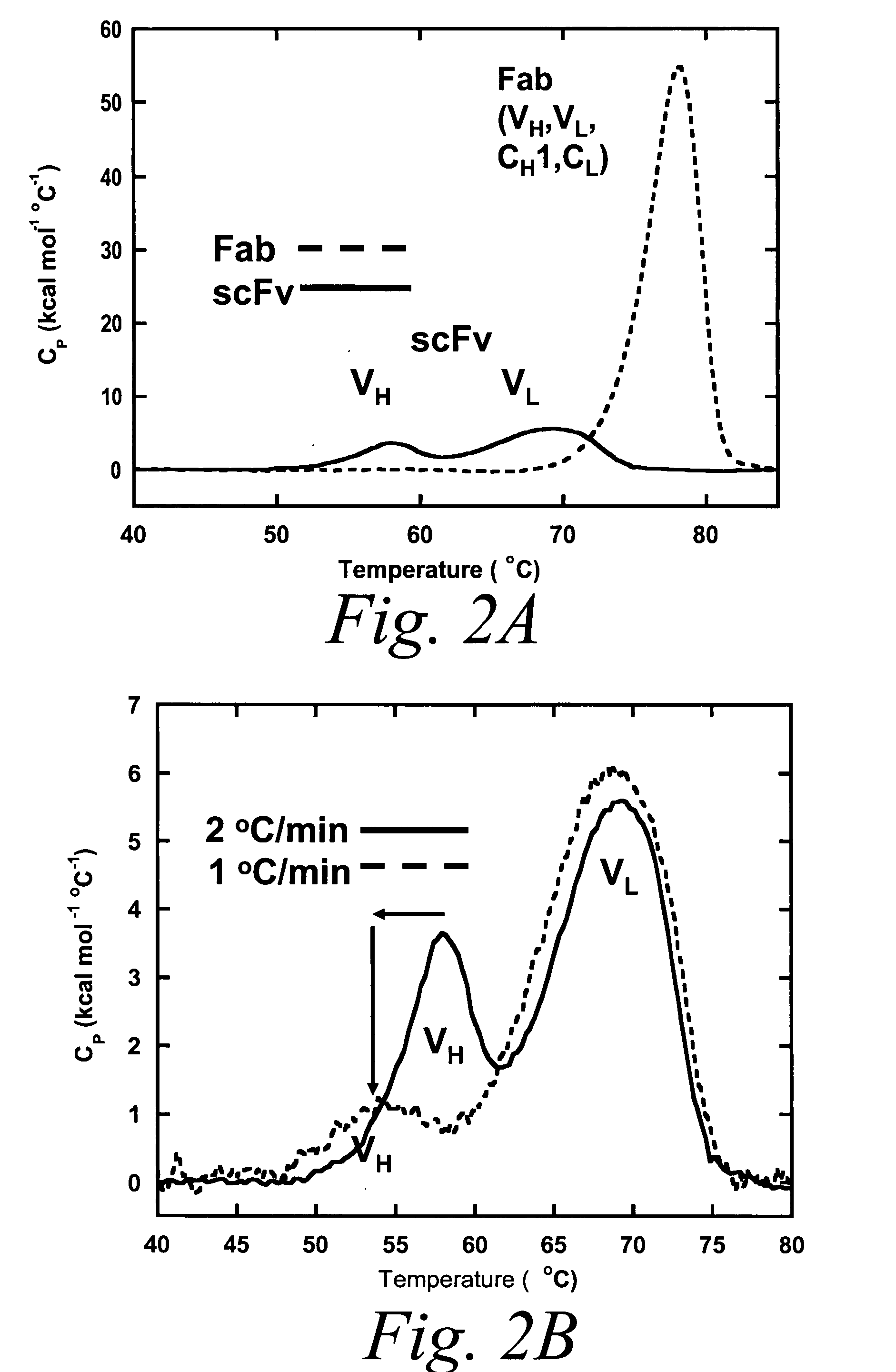Stabilized polypeptide compositions
a polypeptide and composition technology, applied in the field of stabilized polypeptide compositions, can solve the problems of fractional populations of non-functional materials, affecting the ability of antibodies or antibody domains to fold properly, and poor stability, so as to improve the stability and the method of making. , the effect of improving the composition of polypeptides
- Summary
- Abstract
- Description
- Claims
- Application Information
AI Technical Summary
Benefits of technology
Problems solved by technology
Method used
Image
Examples
example 1
Preparation of Conventional BHA10 scFv and Fab proteins
[0923]BHA10 scFv was subcloned from plasmid pXWU034, using the Polymerase Chain Reaction (PCR) with oligonucleotide primers shown in Table 2 below. The forward primer BHA10-01F contains a unique Sph I restriction endonuclease site (underlined sequence) followed by 18 bases of sequence complementary to the BHA10 N-terminal heavy variable domain gene. The reverse primer, BHA10-01R, contains 24 bases of sequence complementary to the BHA10 C-terminal light variable domain gene, 15 bases of sequence complementary to an Enterokinase Site, and adjacent Hind III and Xba I restriction endonuclease sites (endonuclease sites are underlined). Following PCR amplification, a PCR product corresponding to the expected size was resolved by agarose gel electrophoresis, excised, and purified using the Millipore Ultrafree-DA extraction kit according to manufacturer's instructions (Millipore; Bedford, Mass.). The purified PCR product was digested wi...
example 2
Thermal Stability of Conventional BHA10 scFv molecules
[0926]Differential Scanning Calorimetry (DSC) was used to test whether an isolated BHA10 scFv is intrinsically less stable than its Fab counterpart. Scans were performed using an automated capillary differential scanning calorimeter (capDSC, MicroCal, LLC). Protein and reference solutions were sampled automatically from 96-well plates using the robotic attachment. Prior to each protein scan, 2 scans were performed with buffer in the sample cell and used for background subtraction. A single cleaning scan was performed using 5% Liquinox after every protein scan. After every scan, the instrument automatically rinsed both the reference and sample cells three times with 2 ml distilled deionized H2O containing 0.01% sodium azide. Scans were performed at 1° C. / min using the medium feedback mode for enhanced peak resolution. The scan range was 20-95° C. All 96-well plates containing protein were stored within the instrument at 6° C.
[0927...
example 3
Construction of BHA10 scFv Molecules with Improved Thermal Stability
[0928]Knowing that the BHA10 scFv domain, as evidenced in Example 2, is intrinsically unstable, it was hypothesized that engineering the scFv through the use of recombinant DNA technology to produce a modified scFv that is thermodynamically or functionally equivalent to a Fab under thermal challenge conditions should result in an scFv domain that is useful for constructing a bispecific antibody. Moreover, it was also hypothesized that engineering of the isolated scFv domain by itself should impart whatever beneficial biophysical properties are gained when re-introduced as a component of a full bispecific molecule. Towards that end, an effort to improve the biophysical stability of the BHA10 scFv domain using an E. coli expression system and monitored improvements in stability by measuring binding of thermally resistant scFv domains to ligand in a thermal challenge assay was begun.
[0929]To stabilize the scFv domains ...
PUM
| Property | Measurement | Unit |
|---|---|---|
| Tm | aaaaa | aaaaa |
| TM | aaaaa | aaaaa |
| MW | aaaaa | aaaaa |
Abstract
Description
Claims
Application Information
 Login to View More
Login to View More - R&D
- Intellectual Property
- Life Sciences
- Materials
- Tech Scout
- Unparalleled Data Quality
- Higher Quality Content
- 60% Fewer Hallucinations
Browse by: Latest US Patents, China's latest patents, Technical Efficacy Thesaurus, Application Domain, Technology Topic, Popular Technical Reports.
© 2025 PatSnap. All rights reserved.Legal|Privacy policy|Modern Slavery Act Transparency Statement|Sitemap|About US| Contact US: help@patsnap.com



